Writers who master any of these high-demand types of copywriting can write their own ticket, even in today’s economy.
If you want to make a living writing, you’ve probably considered copywriting as an option.
Not only can copywriting be a lot of fun, it can be very financially rewarding too.
But if you did choose it as a career path, what type of copywriting would be right for you?
Before answering that question, we need to discuss what copywriting is and what copywriters do to make sure it’s even a good fit for you.
Let’s dive in.
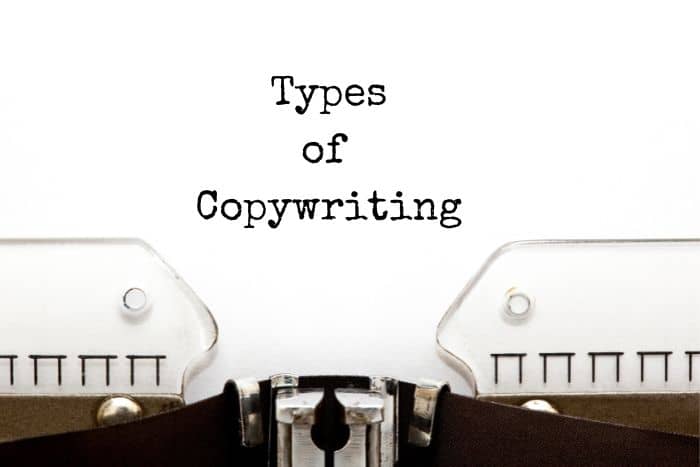
What is Copywriting?
Simply put, copywriting is the art of persuading consumers to take a desired action.
You may want them to buy a product or service, download a report, complete a questionnaire, or do any number of things.
Writing copy isn’t limited to just the written word either. When you hear an ad on the radio or watch a commercial on TV, a copywriter wrote that.
The demand for quality copywriting is almost endless: billboards, brochures, catalogs, emails, flyers, jingle lyrics, scripts for inbound phone calls, etc.
In short, copywriters make the sales and marketing process come alive — they are its voice.
What Does a Copywriter Do?
It’s tempting to think copywriting simply means throwing some buzz words on a page and calling it a day.
Nothing could be further from the truth.
A successful copywriter knows the prospect better than they know themselves.
They know what drives their customers to act and why.
They show the prospect the benefits of the product or service and how it will improve their lives.
They also communicate that information clearly and concisely to resonate with the audience.
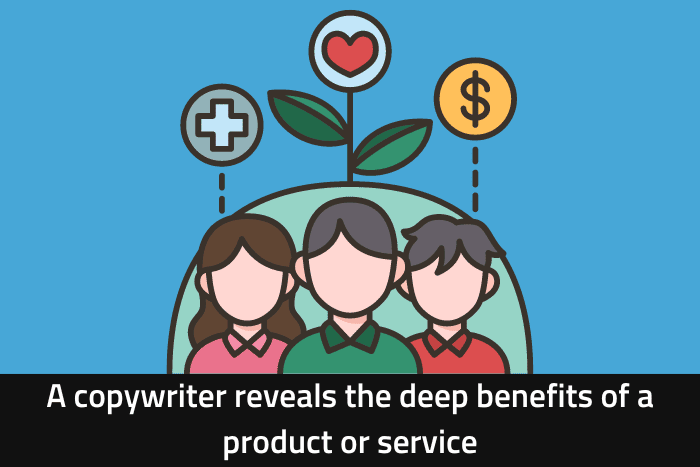
Copywriters are also skilled researchers.
They may spend days or weeks studying their target audience to find the “nugget” that motivates prospects to act.
Now that you have a better idea of what a copywriter is and what they do, let’s look at some copywriting career options.
Top 10 Types of Copywriting
Not all copywriting is the same. Different niches require slightly different skill sets.
While it’s okay to experiment to find the one you’re best suited for, it’s recommended that you focus on only mastering one or two types of copywriting. If you want to expand your range of offerings in the future, feel free.
However, many successful copywriters focus on mastering only one or two of these skills, and have created wildly successful businesses using this strategy.
You can too.
1. B2B Copywriting
B2B (business-to-business) copywriters help companies market products and services to other businesses. Although individuals may also buy the product or service, they’re not the primary focus.
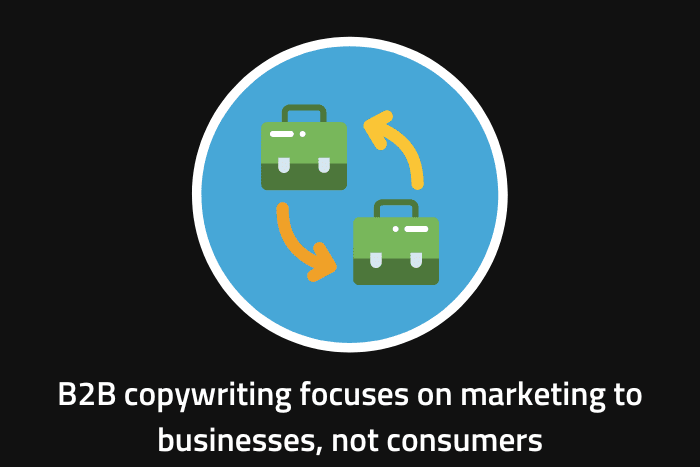
Writing for businesses is much different than writing for individual consumers:
- Business sales material is often stuffy and boring. A B2B copywriter that knows how to communicate these same points in a clear and conversational tone will always be in-demand.
- Unlike retail consumers who may have different reasons for buying something, the motivations for business customers often boil down to saving or making more money.
- The B2B sales process is typically very long. And because customers explore multiple vendors before buying, every lead must be carefully nurtured. Thus, there needs to be a lot of fresh material that often makes the same points from different angles.
- The more expensive the item, the more people involved in the purchase decision. Each stakeholder will have different concerns and require unique sales material.
And so on.
The variety and amount of sales material needed in B2B is staggering: white papers, case studies, press releases, ebooks, blog posts, sell sheets, etc.
In other words, there’s a ton of opportunity for B2B copywriters.
On one project you might be writing a white paper on small business trends for Salesforce. And on another, you may find yourself crafting clever billboard copy for Shopify:

2. Brand Copywriting
Brand Copywriting is unlike any other form of copywriting.
Typically, marketers are concerned about tangible metrics: sales volume, leads generated, email subscribers added, etc.
Brand copywriting focuses on raising brand awareness, not immediate, measurable returns. The focus is on making consumers feel more positive about a company and its products. Sales are an indirect result.
The goal is to get people to think of the company first when they want a soft drink, motorcycle, handbag, or brand of toilet paper.

This type of copywriting is geared towards older, established firms that place a premium on image over the short-term returns on investment.
Brand awareness marketing is used as the foundation for more traditional marketing efforts. Shorter-term campaigns will mesh with the brand’s image that’s been developed over time.
Perhaps the company most famous for its brand awareness copywriting is Coca-Cola:
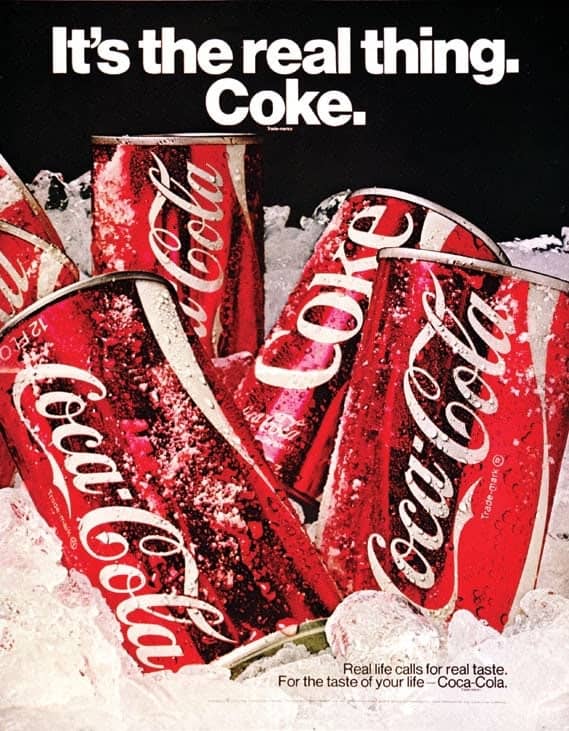
3. Content Marketing
Content marketing educates, informs, and entertains without appearing overtly ‘sales-y.’
Good content writing builds trust and makes people more receptive to listening to your offer by providing valuable and relevant information.
Its indirect nature is its biggest advantage.
Content writing takes many forms: blog posts, infographics, webinars, social media posts, and more.
And as sales messages continue to bombared consumers at every turn, gaining their attention becomes much harder.
In fact, providing quality information through content marketing is one of the few ways to break through the noise and reach your audience.
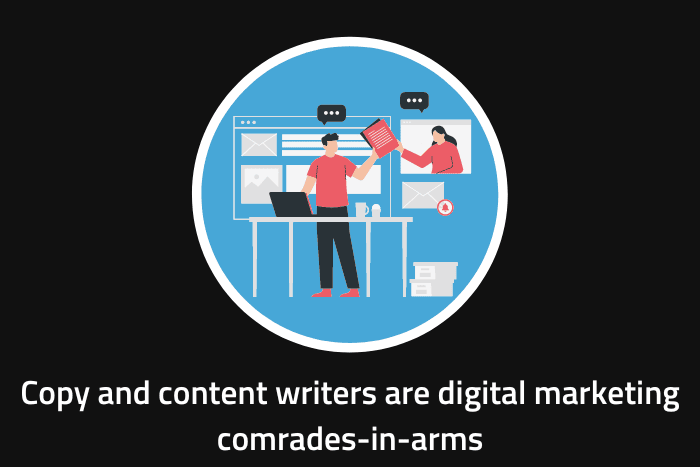
Regardless of the copywriting niche you enter, relevant, engaging, and valuable content helps build trust with your audience, bolsters your authority among competitors, and boosts your conversions.
For example:
Smart Blogger’s post on How to Become a Copywriter is an excellent example of how educating a reader (and building trust) can eventually lead to sales.
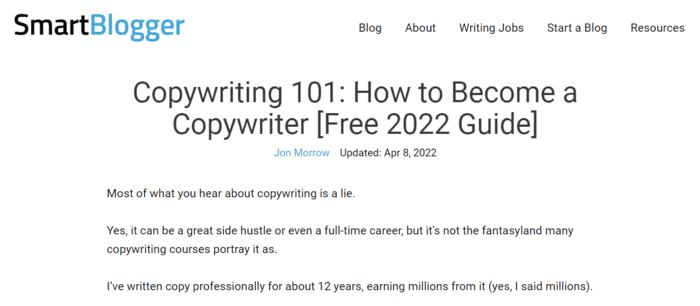
4. Direct Response Copywriting
When people think of copywriting, they usually think of Direct Response Copywriting.
The term is a holdover from the days when sales material came to you via print magazines, print newspapers, and “junk mail.”
Products and services are still sold that way, of course, but not nearly as often as they were years ago.
Direct Response marketers aim to motivate prospects to take action right now. The copy must immediately resonate with the audience or the sales opportunity is almost always lost.
The goal could be to persuade a prospect to share their email address, schedule an appointment, attend a webinar, or buy a product.
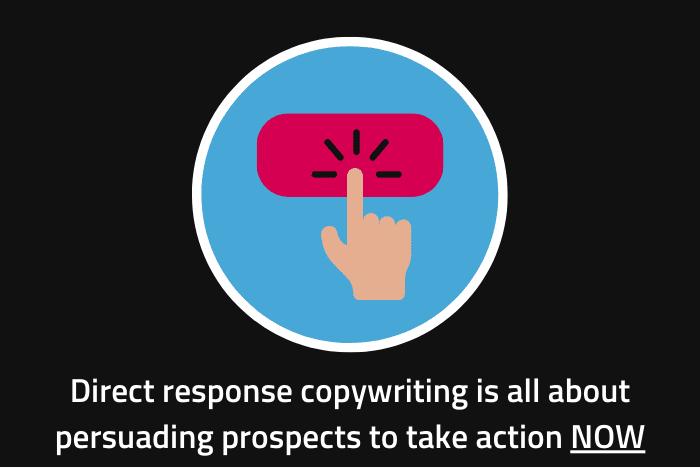
Direct Response marketing provides timely feedback and lets marketers test variations to achieve the best results.
Sometimes the adjustments can be as big as reaching out to a completely different audience or as small as changing the color of the Call To Action button.
No matter how successful a campaign is, there’s always a chance it could be improved with just a tweak or two in the copy.
Here is an example of a landing page from Morning Brew. The decision is simple. Subscribe or not.
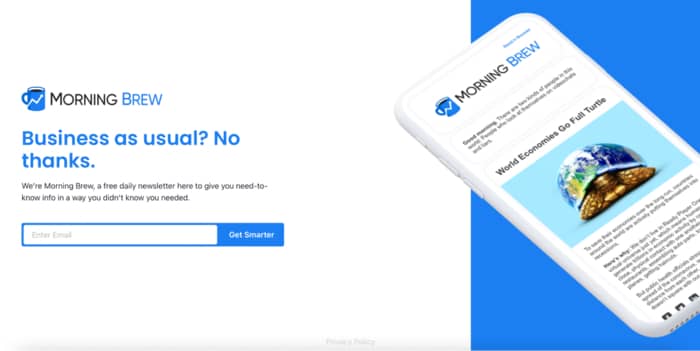
5. Email Copywriting
Email Copywriting is a specialized kind of direct response copywriting. It provides 1:1 interaction with the reader like no other digital marketing method can.
Unlike many other marketing messages shown to people uninterested in what you have to offer (e.g. display ads), the subscribers on your email list are at least somewhat interested in what you have to say.
However, it’s still hard work to sway subsribers to open the email, and even harder work to retain their trust. Once consumers feel you no longer offer them any value, they’ll unsubscribe in a heartbeat.
The great thing about this marketing channel is its tremendous ROI. That means skilled email copywriters will always be in demand.
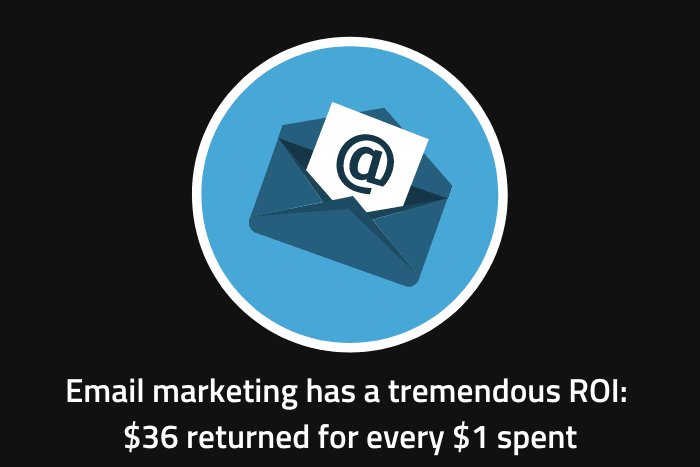
Let’s look at email marketing in action.
Below is a questionnaire example from MomandDadMoney. Is there a better way to better understand your audience than asking them directly 1:1?
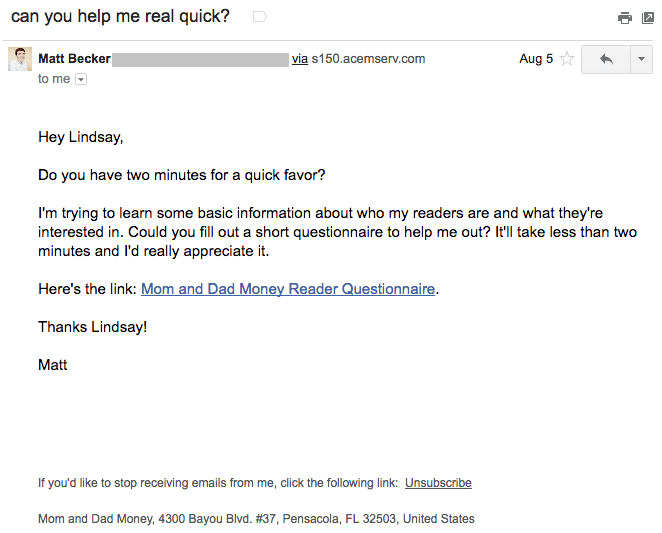
6. Public Relations Copywriting
Public Relations Copywriting is another specialized type of copywriting.
A successful press release must have a well-crafted hook that compels the reader into taking action and states your value proposition in less than 500 words.
All too often, companies neglect the importance of a well-written press release. And instead of hiring a copywriter to a write clear, high-quality PR piece, they patch something together with a fill-in-the-blank template and hope for the best.
The end result is a poorly written effort that comes across as spam and is promptly ignored.
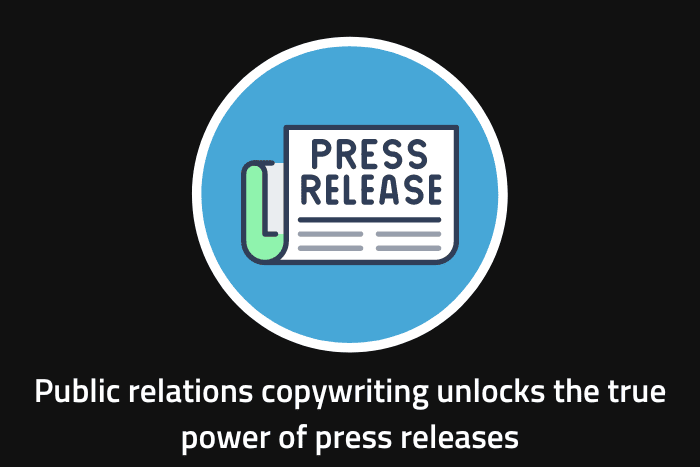
A copywriter that knows how to write good press releases (and get them into the hands of the right people) will always be in demand.
If a client has anything noteworthy: a new product, special event, leadership change, or breaking news, it is a candidate for a press release.
Here’s an example of the type of press releases a PR copywriter might create:

Does that look like a template to you?
7. SEO Copywriting
SEO Copywriting is a subset of content marketing. It’s designed to get articles ranked as high as possible in the search engines.
SEO Copywriters must craft high-quality web content that matches the searcher’s intent and be valuable/helpful to the reader.
If the search engine (usually Google) doesn’t feel the website is an authoritative source, an individual article won’t rank highly, no matter how well-written it may be.
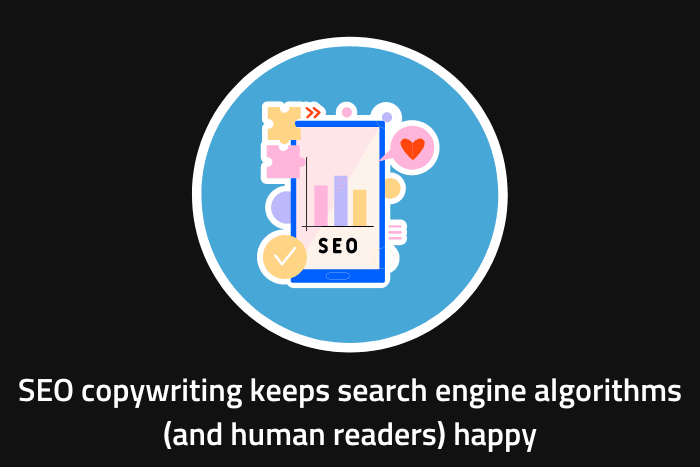
Quite often, the writer will take articles that aren’t ranking well and apply SEO tactics to help them rank higher.
Unlike most copywriting options discussed here that can be used on a per-project basis, SEO Copywriting principles must be applied to the entire site to be effective.
8. Social Media Copywriting
Social Media Copywriting is a bit of a hybrid in the copywriting world.
Depending on the campaign, you may be trying to:
- Direct people to a sales page
- Create brand awareness
- Generate conversation
- Get someone to like, follow, and share a post or page
- Direct people to external content
In other words, Social Media Copywriters wear many hats.

Social media copy must be short, friendly, and conversational. Shorter, more concise content tends to get better responses.
Every platform requires a different approach because Social media isn’t a one-size-fits-all world.
A Social Media Copywriter’s biggest challenges are the character limits and the limited time you have to make a favorable impression.
Eye-cathcing graphics are also essential, as social media is very visual medium.
The social media landscape is ever-changing. And what works today may be obsolete tomorrow. So if Social Media Copywriting piques your interest, be prepared to stay sharp with industry best practices.
Here’s an example social media copywriting in action — a tweet from Airbnb:
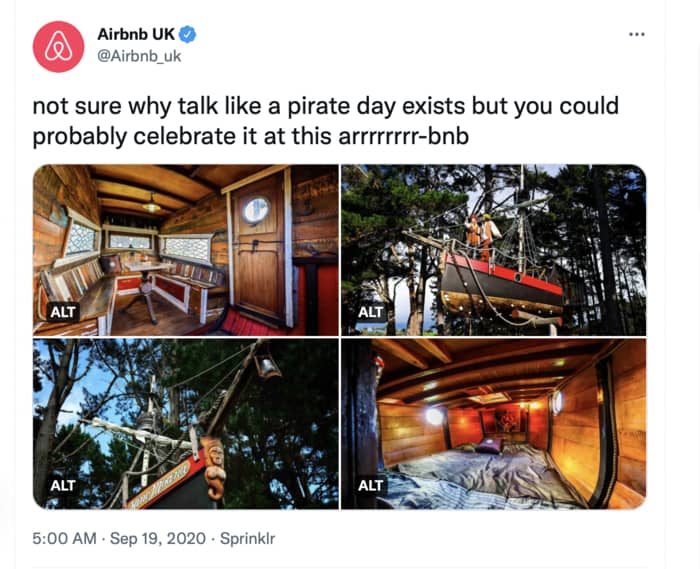
9. Technical Copywriting
Technical Copywriting is probably the most challenging form of copywriting. It’s copywriting for the science and technology fields.
Technical writers break complex concepts into terms the layperson can understand. They create how-to manuals, reference guides, and so on.
A technical copywriter uses those simplified terms to sell goods and services. They are educators, as well as salespeople.
And as you might guess, finding people qualified to do both is not easy.
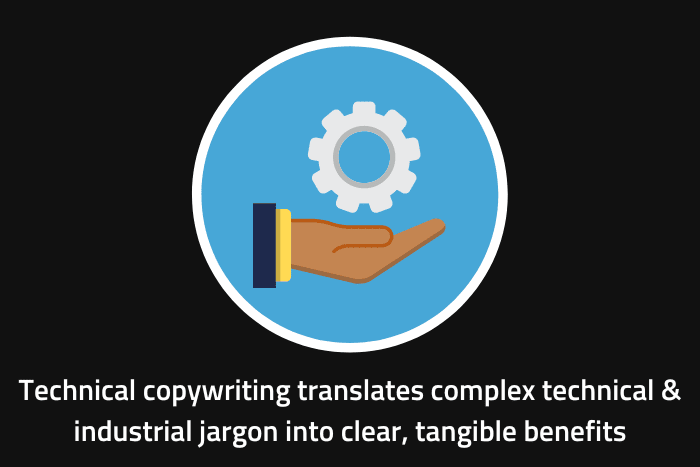
Most copywriters are fine with everyday products like pet food, travel, and laundry detergent.
However, unless someone has a STEM background, they may struggle to write successful copy for products that require specialized education and many years of experience to understand.
Because of the lack of people qualified to do the job, those who can write technical copy often write all the marketing material:
- Case Studies
- White Papers
- Brochures
- Emails
And more.
For example, check out technical copywriter, William C. Blake’s portfolio page. Note the range of services he offers:
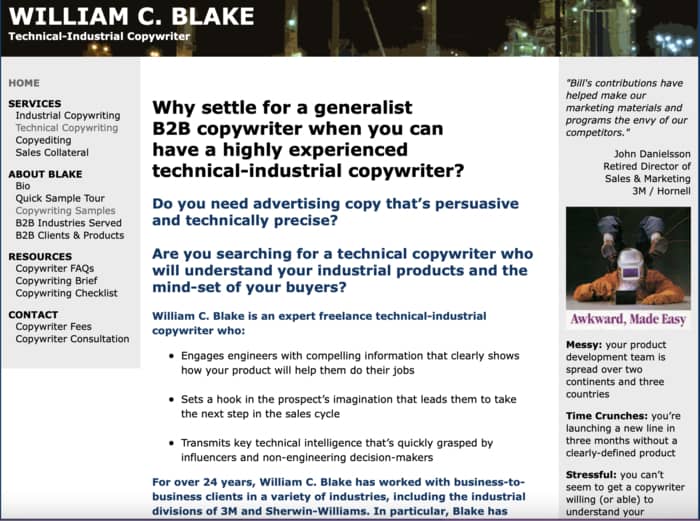
10. UX Copywriting
UX, or User Experience, Copywriting is a form of website copywriting that involves the entire user experience from start to finish.
Whether someone performs the action you want depends upon their feelings and confidence (read: trust level) about everything on the page.
- How easy was it for them to find what they needed?
- How fast did the page load?
- Were the instructions clear?
- How did the graphics make them feel?
And so on.
Basically, how comfortable were they interacting with your website? Every interaction generates feelings, either good or bad.
If more of those interactions are positive than negative, the user’s experience will be good. The opposite will also be true.
In the hypercompetitive world of online marketing, you want the user experience to be as positive as possible.
The little things matter.
UX Copywriting is far more holistic than the other forms of copywriting we discussed. It goes way beyond the words on the page.
Because there are so many elements to effective UX copywriting, a single graphic is unlikely to offer you much value.
Further Reading: UX Copywriting: What You Need To Know (Examples Included!)
What Types of Copywriting Will You Try?
The list above is not exhaustive by any means, and the lines between them are not always well-defined either.
However, you now have a much better idea of what copywriters do and the types of copywriting jobs out there.
Regardless of which part of the copywriting world you choose, the core functions are always the same – getting people to take action.
As long as there are goods and services to sell, the world will need compelling copy to sell them.
Good luck.
The post Top 10 Types of Copywriting to Make Money in 2022 (& Beyond) appeared first on Smart Blogger.

No comments:
Post a Comment